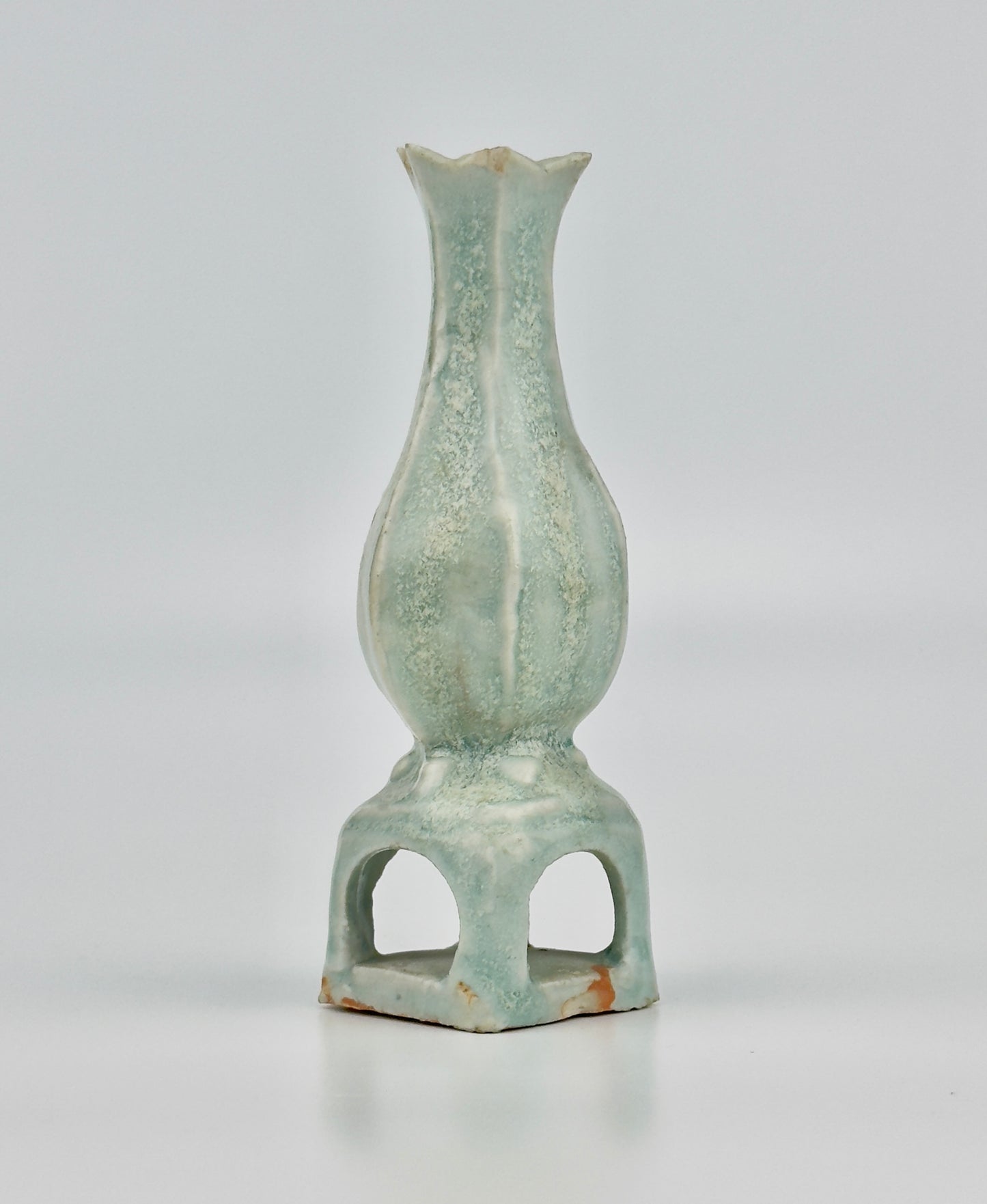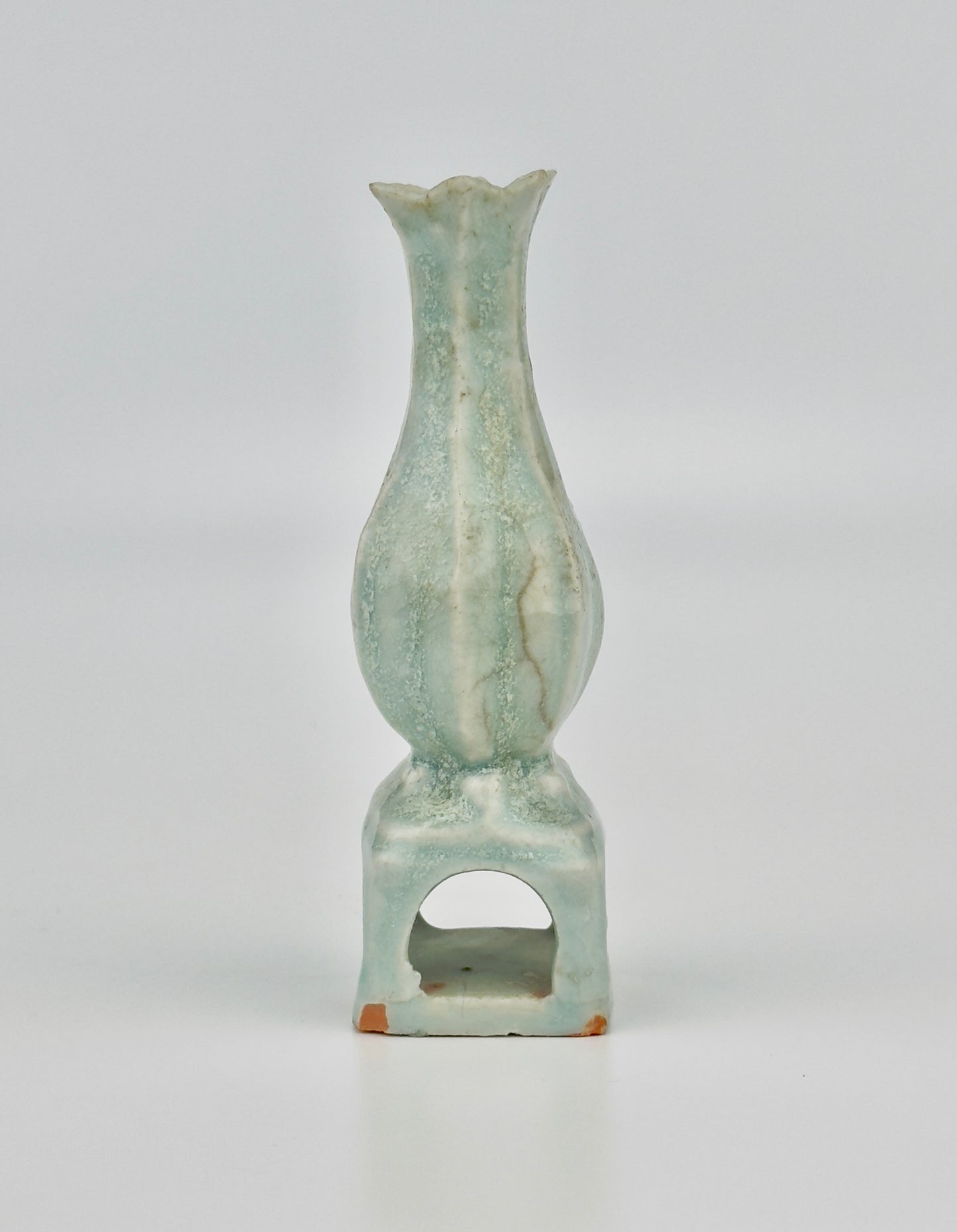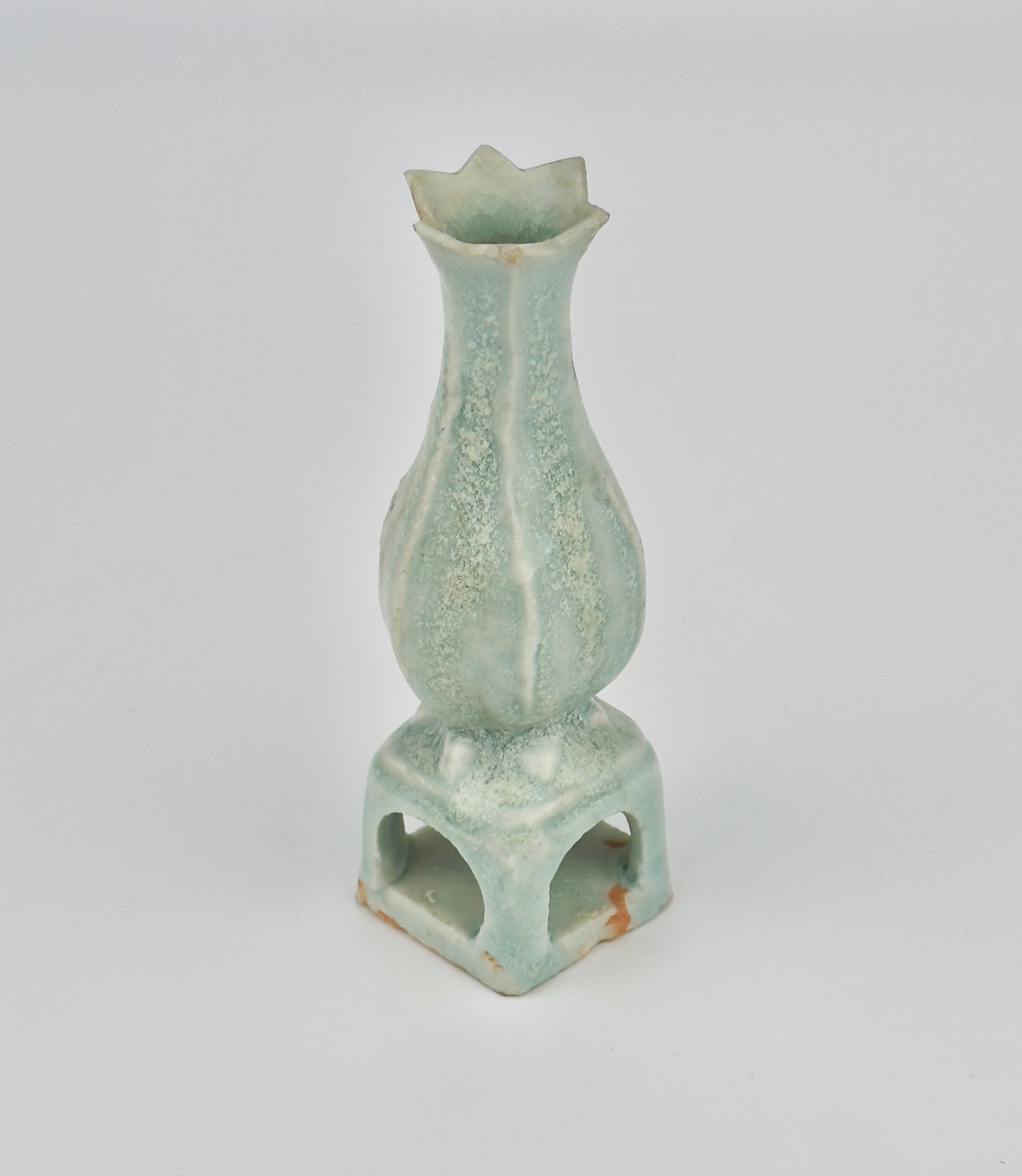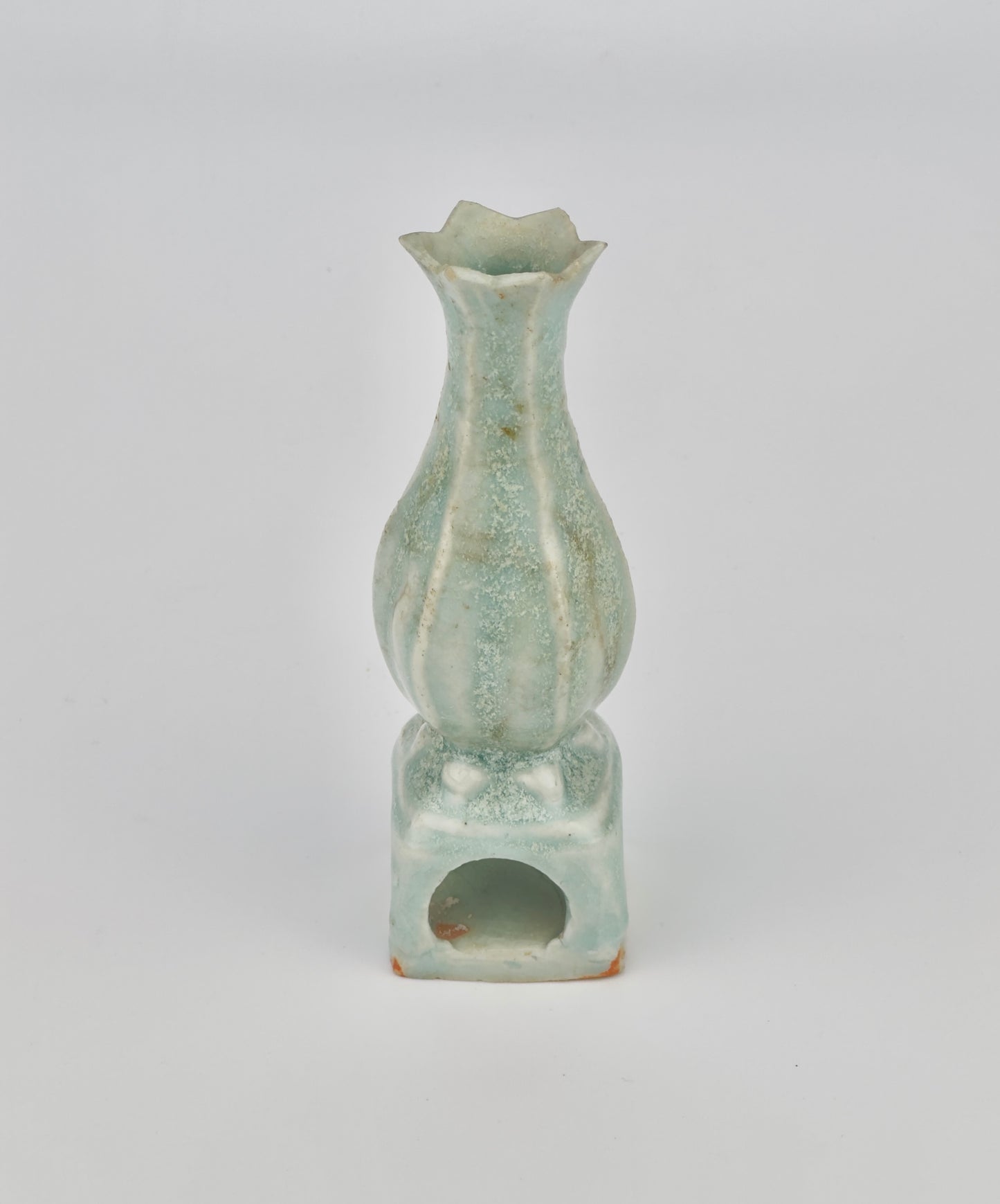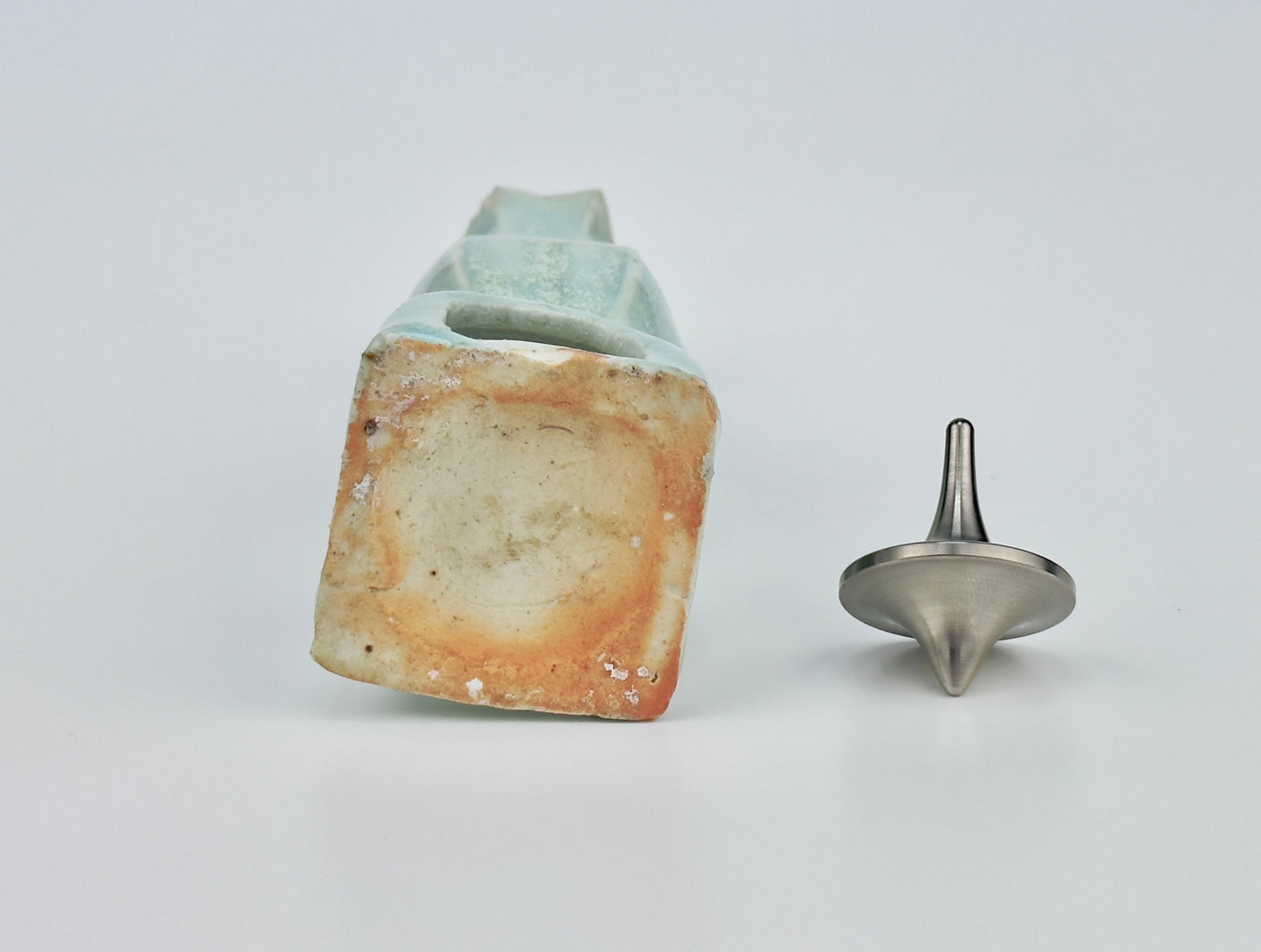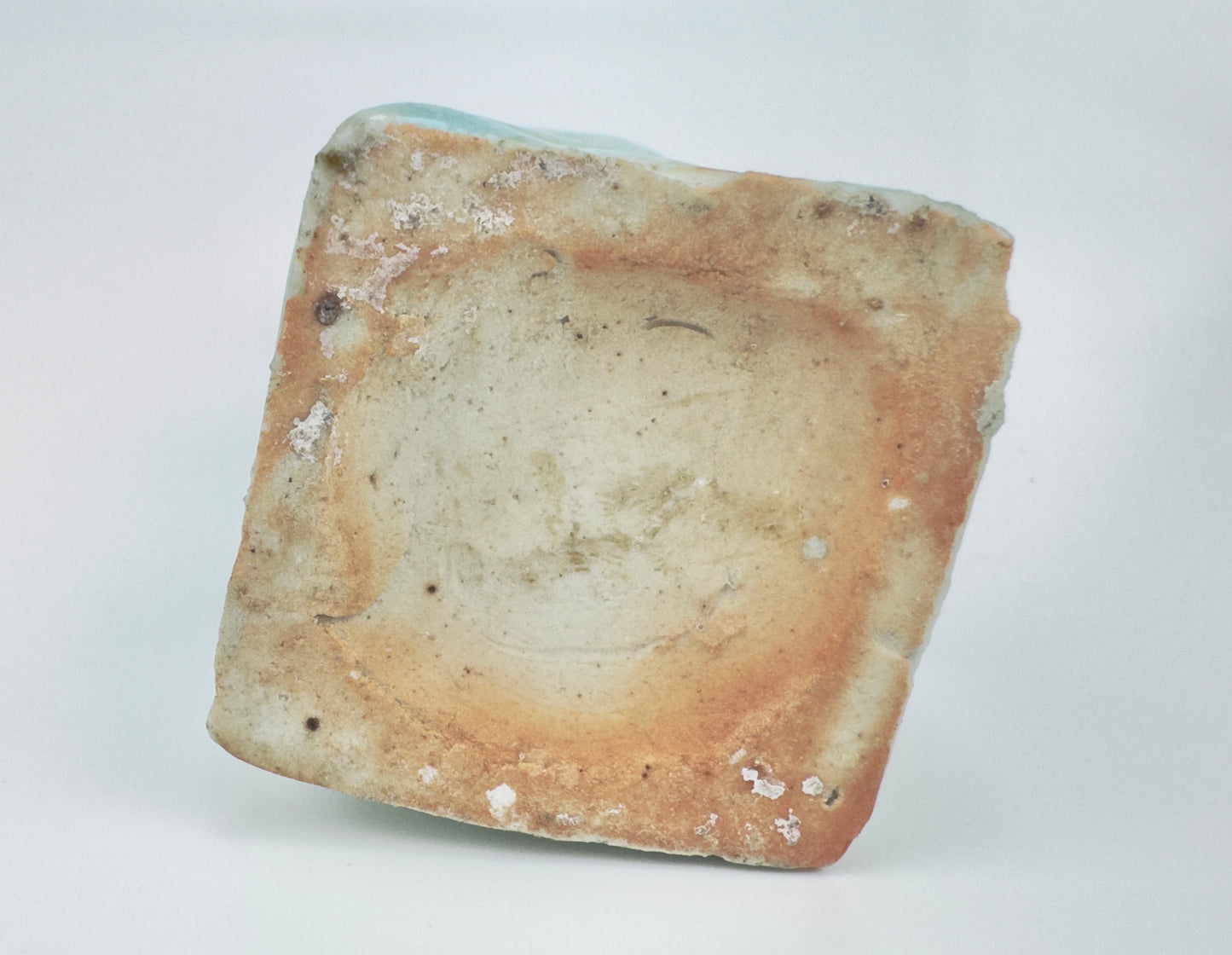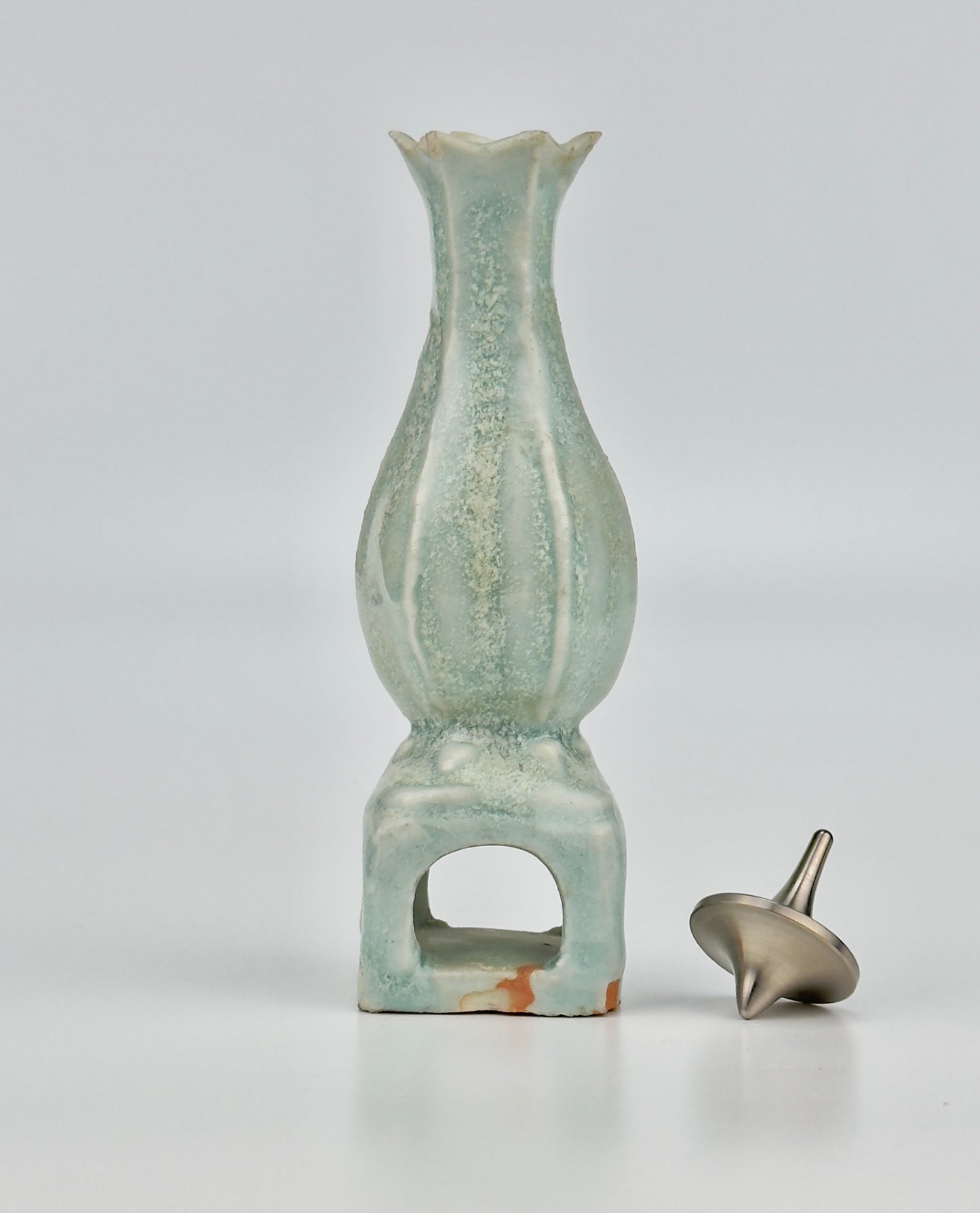Small Qingbai Pear-Shaped Vase, Yuan Dynasty(13-14th century)
Small Qingbai Pear-Shaped Vase, Yuan Dynasty(13-14th century)
Couldn't load pickup availability
This exquisite piece is a Qingbai ware from the Song to Yuan dynasty, and it appears to be an excavated artifact given its earthy encrustations, suggesting it has rested in the ground for a lengthy period. Despite this, the piece retains its signature Qingbai glaze, which is characterized by its luminous, pale blue hue. The vase itself has a graceful, elongated neck flaring gently at the mouth, reminiscent of a blooming flower. Standing on a squared, hollow base that gives it a distinctive silhouette, the vase demonstrates the elegant simplicity and refined craftsmanship of the period.
Period : Song-Yuan Dynasty(13-14th century)
Type : Small Ewer
Medium : Qingbai Ware
Size : 13.5 cm(Height), 4.5cm(Diameter)
Provenance : Acquired in late 1990s from Hongkong
Condition : Good (One chip on the mouth)
Reference :
1) Christies Newyork 1–15 DEC 2015 - Exquisite Splendor: Chinese Ceramics And Works Of Art - Lot 68
(Price realised : 3,750 USD / Type : Closely related)
https://onlineonly.christies.com/s/exquisite-splendor-chinese-ceramics-works-art/small-qingbai-type-faceted-pear-shaped-vase-integral-stand-68/22817
* Qingbai Ware
Qingbai ware, which translates to "blue-white ware," is a type of Chinese porcelain that was made at the Jingdezhen and other kilns in the porcelain-producing regions of China, primarily during the Song dynasty (960–1279) and continuing into the Yuan dynasty (1271–1368). It is known for its translucent quality and the pale blue-green glaze that characterizes most of its pieces.
The qingbai glaze was achieved using a small amount of iron in a reduction-fired atmosphere, which produced the subtle blue-green tint. The body of qingbai ware is typically made of a fine, white porcelain that is often referred to as 'artificial jade' due to its resemblance to the esteemed stone. The thinness of the body and the high firing temperatures used contributed to the translucent quality of the finished product.
Qingbai ware includes a range of items such as bowls, cups, vases, and ewers. The designs are usually simple and elegant, with an emphasis on the graceful lines and form of the objects. Decorative motifs, when present, are often incised, carved, or molded in relief and can include floral patterns, dragons, phoenixes, and other symbolic elements drawn from Chinese culture.
Over time, the technology and techniques used to produce qingbai ware evolved, leading to innovations in glaze and decoration that would influence later types of Chinese porcelain. Despite these changes, qingbai ware remains a distinguished example of the potters' art in Song and Yuan China, reflecting the refined aesthetic and cultural values of the period.

